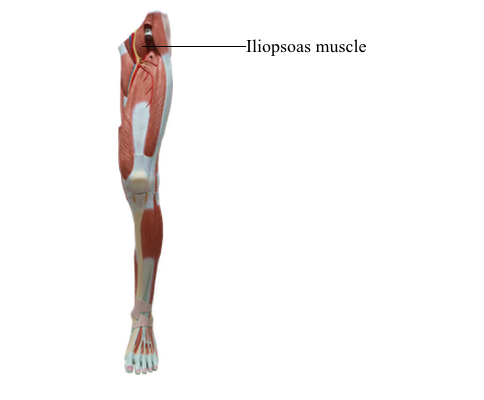Main Model

40 Iliopsoas muscle

Psoas Major
The long, thick, fusiform psoas major lies lateral to the lumbar vertebrae. Psoas is a Greek word meaning “muscle of the loin.” (Butchers refer to the psoas of animals as the tenderloin.) The psoas major passes inferolaterally, deep to the inguinal ligament to reach the lesser trochanter of the femur. The lumbar plexus of nerves is embedded in the posterior part of the psoas major, anterior to the lumbar transverse processes.
Iliacus
The iliacus is a large triangular muscle that lies along the lateral side of the inferior part of the psoas major. Most of its fibers join the tendon of the psoas major. Together the psoas and iliacus form the iliopsoas, the chief flexor of the thigh. It is also a stabilizer of the hip joint and helps maintain the erect posture at this joint. The psoas and iliacus share in hip flexion; however, only the psoas can produce movement (flexion or lateral bending) of the lumbar vertebral column.
Psoas major
Superior Attachment: Transverse processes of lumbar vertebrae; sides of bodies of T12-L5 vertebrae and intervening intervertebral discs
Inferior Attachment: By a strong tendon to lesser trochanter of femur
Innervation: Anterior rami of lumbar nerves L1, L2, L3
Main Action(s): Acting inferiorly with iliacus, it flexes thigh; acting superiorly it flexes vertebral column laterally; it is used to balance the trunk; when sitting it acts inferiorly with iliacus to flex trunk
Iliacus
Superior Attachment: Superior two thirds of iliac fossa, ala of sacrum, and anterior sacro- iliac ligaments
Inferior Attachment: Lesser trochanter of femur and shaft inferior to it, and to psoas major tendon
Innervation: Femoral nerve (L2-L4)
Main Action(s): Flexes thigh and stabilizes hip joint; acts with psoas major